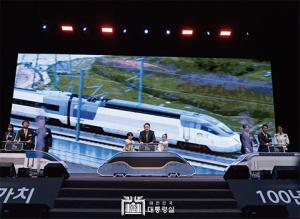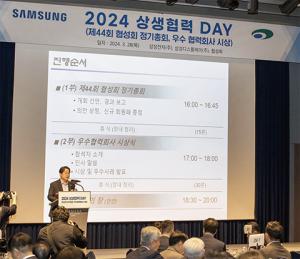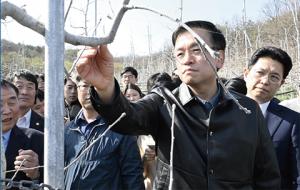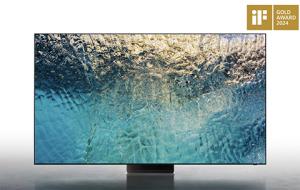 |
순수 서양화 전통의 맥을 잇는 화법의 중견 화가
“원색을 배제한 고전주의적 발색 기법과 독특한 원근감 표현이 돋보여”
김미영 서양화가
현실 대상을 오브제로 삼는 화가들의 길은 두 가지다. 생명체냐, 아니면 환경이냐. 이 중요한 선택이 끝나면 색감을 고르게 되고, 자신이 고른 카테고리에 들어가면 그때부터 수십 년 간의 창작하는 번뇌가 시작되는 것이다. 유년기에 본 단조롭지만 아름다운 풍경을 평생 각막 안쪽에 담은 작가, 그래서 이 행복한 고통을 “그림 외에는 할 수 있는 것이 없다. 오직 나의 길이기에”라고 표현하는 중견작가 김미영 화가의 작품 세계를 감상해 본다.
‘색’으로 원근감을 표시하는 전통 서양회화의 순수함
이토록 한결같이 자연이라는 공간 안에서 똬리를 틀고 방벽을 채워 나가는 작가가 있을까. 일견 단조로운 상자 속을 열고 들어가면 시공간이 달라지고, 전우치가 묘술을 부려 홀연히 사라진 족자 같은 풍경이 펼쳐진다. 작가의 작품을 분석할 때는 모름지기 작가 본연의 모습을 들여다보는 것이 좋다. “한적한 고향인 해남에서 태어난 나는 어릴 적부터 딱히 할 것이라곤 없었다. 산을 둘러보고 강이 흘러가는 것을 바라보며 자라다 서울로 올라왔다. 그러다 그림에 입문했는데, 어릴 적 보던 풍경을 나도 모르게 그리고 있었다. 그렇게 학창 시절을 그림으로 채웠고, 그림을 전공해서 30년이 넘도록 그림만 그리고 있다” 김미영 화가는 아주 자연스럽게 순수회화를 고집하는 풍경화가가 됐다. 여기까지라면 다른 화가들과의 고백과 다르지는 않을진대, 김 화가는 유난히 돋보이는 색감을 사용한다. 마치 유행을 선도하는 거리에 한복을 입고 나가면 눈에 띄듯이. “원색을 쓰지 않는다. 미묘하고 매력적인 색을 좋아해서 3차원, 4차원의 색을 고른다. 전시회에 작품을 냈더니 모두가 내 그림을 18세기 그림 혹은 70세 이상의 원로화가의 작품 같다고들 한다” 작품을 시작한 초창기부터 저명한 화가들로부터 ‘푹 익은 색’을 쓴다고 평가받았고, 화풍이 급격하게 바뀌지 않으면서 올곧게 한 길만을 걷고 있다. “한 때는 컬러풀한 작품을 시도해 보기도 했다. 하지만 결국은 내 작품이 아니라고 판단했다” 김 화가의 발색법은 정평이 나 있다. “색감을 오묘하게 만드는 방법은 한번 칠하고 계속 덧바르지만 처음의 색이 완전히 없어지지 않고 색이 남도록 해서 그라데이션 효과를 주고, 원근감을 나타낼 수 있도록 했다.”
김미영이라는 이름으로 그리는 풍경화의 정의
김 화가의 그림 표현은 신고전주의의 정석적인 발현이라 할 만 하다. 그럼에도 사진과 같은 사실적 표현주의와는 거리가 있다. 대신 일반적인 사실적 풍경화에는 찾을 수 없는 형태의 모호함, 겹겹이 입혀진 색의 모호함으로 작가 개인의 감정이 담긴 새로운 색과 형태로 표현하곤 한다. 오래 전 떠난 고향은 세월의 나이테를 덧입듯이 김 화가의 마음속에 남아 있다. 그렇기에 머릿속에 새겨져 있는 풍경은 가슴을 거쳐 색색으로 분출된다. “보통 눈에 보이는 그대로, 풍경의 색을 있는 그대로 표현하는 것이 대부분이지만, 나는 내 식대로 다시 표현한다. 그러므로 관람객들은 내 그림을 보면서 왜 이렇게 표현했는지 한번쯤은 생각해주었으면 좋겠다. 여느 서양화가들처럼 나 역시 작품 하나를 구상하고 완성하는데 오랜 시간이 걸린다. 수고로움과 노고로 부담을 주려는 의미는 아니고, 그런 작품들의 색감과 표현법에 대한 고민을 함께 할 수 있는 작품이 되길 바란다” 이러한 생각은 김 화가의 전시를 앞두고 원로 화가이자 멘토이기도 한 서울산업대학교 전성권 명예교수가 한 평론 중 “사물을 보는 시각이 원색보다는 은은한 간색의 부드러운 톤으로 평화와 안정감을 준다고 하겠다. 자연에 대한 사랑과 동정심, 틀, 산길, 풍경 등 작가의 느낌을 가식 없이 그려나간다. 자연의 신비를 표현하려는 듯, 불가사의의 자연을 발현하려는 노력이 엿보인다”는 표현과 일맥상통한다. 산도, 해변도, 강이 있는 풍경도, 하늘아래 고요한 땅조차도 김 화가의 시선이 멈추는 순간 캔버스 위에 태고적 숨결과 영원한 속삭임을 담은 채 겹겹이 쓴 베일을 벗는 것이다.
앞으로도 넓은 시야로 그리되, 순수 회화의 표현에 천착할 예정
서울미술협회, 은평미술협회에서 활동하고 있는 김 화가는 지난 1월 초대작가전을 성황리에 치렀고, 4월에 출품할 서울미술협회전을 위해 새로운 작품들을 정성껏 준비 중이다. 한편으로는 내년에 계획하는 개인전을 위한 구상도 있다. 여전히 풍경을 위해 때로는 자연을 찾아가 일주일, 보름을 머물며 그림을 그리곤 하는 김 화가는 풍경 중에서 산을 가장 좋아한다. 부드러운 능선을 지닌 산보다는 굳건한 바위가 있는 풍경, 골격이 선명하게 드러난 곳을 좋아하며 과감한 원근감과 입체적인 구도로 스케치를 시작한다. 시야를 넓혀서 화폭에 넓게 표현하는 구도를 선호하기에, 다른 풍경보다 더 넓게 펼쳐진 시야를 볼 수 있다. 그러한 특징이 잘 드러난 작품이 <붉은山>으로, 산의 양쪽 끝 부분을 안쪽으로 조금 내려서 그렸기 때문에 마치 어안렌즈를 통해 보는 듯 광활한 느낌을 담아냈다. 김 화가는 17-18세기의 회화를 교과서 삼아 배워왔고, 앞으로도 순수 미술에 대한 인식에서 벗어나지 않는 작품을 할 것이라 단언한다. “서양화 중에서도 순수회화의 전통적 맥을 잇고 싶은 화가가 되고 싶다. 도상봉 선생님의 화풍을 존경하는 마음이 지금의 색감과 표현법을 만들지 않았나 싶다. ‘빨갛게, 노랗게, 눈이 부시게 그리지 말고. 자네 나이 60이 되면 빛을 볼 것’ 이라고 말씀해주신 전성권 선생님의 말씀도 기억하고 있다” 30년 째 착실하게 캔버스 앞에 앉아 있는 김 화가는 소박하게 그림에 매진하고자 하는 바람으로써 판매에 크게 개의치 않는다. ‘외롭고 고통스럽지만 그만큼 기쁨과 설렘의 가슴 벅참을 선사하는 나의 작품들이기에, 캔버스에 그려진 색깔이라기보다는 내가 지닌 생명체의 표현’이라고 말하는 진솔한 목소리처럼, 세월이 흘러갈수록 진가를 더하는 작품의 창조자. 바로 그것이 화가 김미영을 일컫는 가장 정확한 정의일 것이다.
 |
An established Artist following the tradition of pure Western painting
“Outstanding technique of classical coloring without primary colors and unique sense of perspective”
Kim Mi-young, artist of Western painting
There are two ways for artists who make objet of the target in the real world – living thing or environment. After this important choice, they select impression of colors, and entering the category of their own choice starts dozens of years of agony for creation. As an author who holds a simple but beautiful landscape she saw at her childhood within her cornea for life, artist Kim Mi-young says, “This is a happy trouble. I cannot do without painting since it is my way.” Let’s find out about the world the established artist Kim Mi-young seeks to express.
Purity of traditional Western painting with a sense of perspective expressed by ‘colors’
How consistently this author has been nestling in the space of nature filling up her bulwark! As one opens and enters her seemingly simple box, he becomes faced with a different time and space and finds a landscape like a hanging scroll, from which Jeon Woo-chi (a Taoist magician appearing in traditional Korea) has disappeared using magic, stretched before his eyes. When analyzing an author’s work, it is good to look into her true self. “I was born at Haenam, a secluded place, and from my early childhood, I found nothing to do but look around mountains and see the river flowing. After I had grown up that way, I came up to Seoul. Then I entered into painting but I found myself painting the landscapes I had seen in my childhood in spite of myself. So much did I fill my school days up with painting, majored in painting and have been painting for over 30 years.” Very naturally, artist Kim Mi-young has become a landscape painter who adheres to pure painting. This far, she would not be very different from other painters’ professional confession except that artist Kim uses uniquely outstanding impression of colors as though she, in traditional Korean clothes, were catching attention in a fashionable street. “I don’t use primary colors. With my preference for delicate and gorgeous colors, I choose three and four-dimension colors. When I submitted my work to an exhibition, all reviewers said that my painting is like one in the 18th century or the one by a senior artist over 70 years old.” Since the early period of her career, she had the review of using ‘mellow colors’ from distinguished artists and she has followed one path without a rapid change in her style of painting. “At one time, I tried a colorful work but I decided that it is not my work after all.” Artist Kim’s use of colors is well reputed. “My secret of making impression of colors artistically subtle is this: I apply a brush and go on with reapplying but in a way that the original color may remain without disappearing completely for the purpose of gradation effect and a sense of perspective.”
Definition of landscape portrayed by the name of Kim Mi-young
Artist Kim’s painting expression may well be a representation of standard neoclassicism but it is far from realistic expressionism like a photo job. Instead, new colors and forms containing the author’s personal feelings are expressed with ambiguity of shapes and multi-layer colors. Her home town left a long time ago still remains in the heart of artist Kim with annual rings of the time put on. That is why her landscape carved in her mind is erupted with colors by way of her heart. “Usually, people express things and colors as they see them but I redo them in my way. So I hope my spectators think over once why I put it this or that way while they see my paintings. Like any other Western paining artists, I also take long to conceive and complete one piece of work. I am not trying to bother them with trouble and efforts but I just want my works to enjoy sharing thoughts about the sense of colors and technique of expressions.” Her such thought reminds us of the review by Chun Seong-gwon, an emeritus professor at Seoul National University of Science and technology, a senior artist and mentor, made with artist Kim’s exhibition ahead: “This artist gives a feeling of peace and stability using a soft tone of neutral tints rather than primary colors in her view of things. She portrays the author’s feelings candidly toward her love of nature, sympathy, fields, mountain paths, landscape, etc. As if to express the mystery of nature, her work proves her endeavor to represent the nature of inscrutability.” As artist Kim has her eye laid on, mountains, beaches, landscape with a river and even a silent land under the sky put off their multi-layer veils on canvas containing primeval breath and eternal whispering.
To paint with a wide view adhering to the expression of pure painting
Based on Seoul Art Association and Eunpyeong Art Association, artist Kim held her exhibition for an invited artist in last January successfully and is preparing new works for Seoul Art Association Exhibition scheduled for this April. In parallel, she is conceiving plans on her personal exhibition for next year. For her landscape, artist Kim will still visit nature to paint a picture staying a week or half a month and she likes a mountain best of all landscapes. Rather than a mountain with a gentle slope, she likes a landscape with firm rocks and places with a clear cut and starts to sketch with a daring sense of perspective and cubic composition. As she prefers a composition widely expressed on canvas with a broadened view, one can find a view more broadly extended than in other landscapes. <Red mountain> is the work characterized by that and her painting of both ends of the mountain a little down toward inside gives a spacious feeling as if it were a sight through a fisheye lens. Learning from 17th and 18th-century painting as textbook, artist Kim asserts that she will not deviated from the perception of pure art in her work. “Of Western paining, I want to be an artist in traditional connection to pure painting. I admired the painting style of master Do Sang-bong, which may have contributed to my current sense of colors and expression technique. I also remember what master Chun Seong-gwon said, ‘Do not paint radiantly with red or yellow. You’ll be noticed when you reach sixty years of age.’” Sitting steadily at canvas for the past 30 years, artist Kim doesn’t care much about sales with her hope to be simply devoted to painting. It is as candid as what she says, ‘Though lonely and troublesome, my works present me with so much joy and a stirring feeling that they are not colors put on canvas but an expression of myself as a living thing.’ A creator of work likely to add true value with time could be the most accurate definition of artist Kim Mi-young.
정재헌 기자 jjh05220@naver.com







